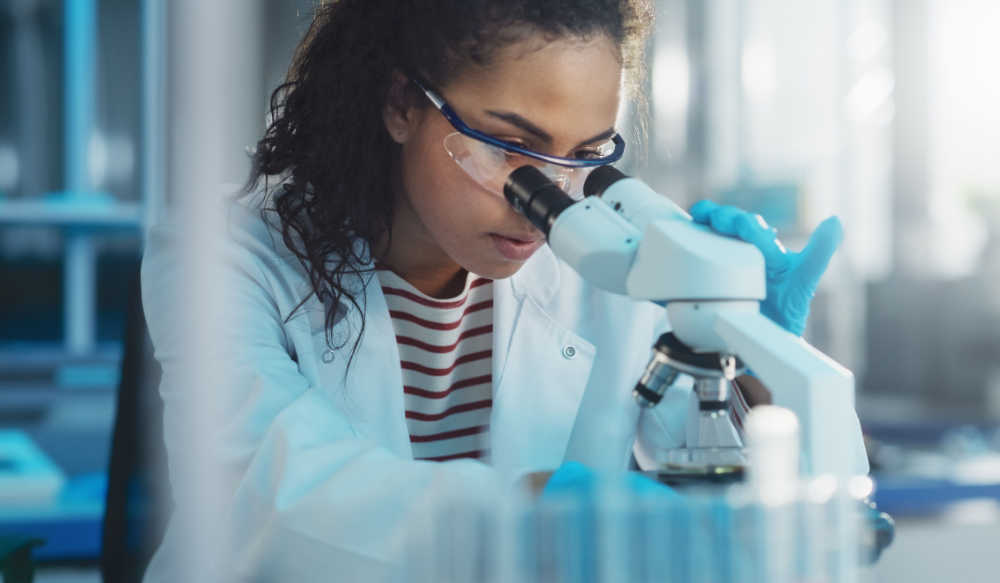Women are not just ‘small men’. Males and females have different hormones and different immune systems; females tend to have thinner skin, and different metabolic rates - the list goes on.
So how is it that women have not been considered in research and that men have been used as the standard for decades, for centuries? Androcentrism is common in our societies where women are treated as “the other” (and inferior) and the male experience is considered the norm.
Most recently, during the COVID-19 pandemic, we saw how a failure to consider diverse populations in the development of Personal Protective Equipment (PPE) led to a fit and design that was not suitable for female bodies. This is despite the fact that women make up around 75% of the health workforce globally. Failing to consider women in the development of new innovations is not a novel issue. But sadly, it persists.
Committed to social justice and having dedicated most of my academic career to the topic of gender equality and feminist economics, I am all too familiar with the lack of inclusivity in knowledge creation in the different sciences.
In global health research and innovation (R&I), gender blindness can have fatal consequences. Take for example the development of new health tools, such as vaccines and diagnostics. Historically, biomedical research has not explored the role of sex as a biological variant, with only one sex used in preclinical studies (usually male). Often, sex is not reported at all, and thus neither the biological nor social implications of these differences are taken into consideration. This can result in the development of health tools that are potentially unsafe or ineffective for half of the world’s population - and as a result also not cost-efficient for healthcare systems.
Health is of course more than just biology; it is profoundly social and determined by economic capacity. While we measure the burden of disease through prevalence, we don’t do so well at considering the broader dimension of disease, such as the availability of healthcare, stigma and discrimination, or financial and social consequences, from labour market integration to children’s poverty.
A new study published by the global health NGO DSW highlights the importance of considering both disease prevalence and impact in the development of effective new tools for poverty-related and neglected diseases such as malaria and schistosomiasis, which disproportionately impact women and girls.
Women are major caregivers, and such diseases can pose a gendered burden on women who tend to look after other family members when they’re unwell, and commonly postpone their own treatment. Similarly, diseases that cause reduced mobility, or that result in stigma or discrimination can impact a woman’s ability to earn an income, limiting women’s contribution to building more prosperous and equal societies.
Considering this, applying a gender lens to research and innovation is not just ‘the right thing to do’. It makes social and economic sense.
So how do we make research and innovation more inclusive? We as policymakers have a role to play in speeding things up, as does the European Commission as a research funding organisation with the power to set standards and inspire other important players.
The EU has stepped up its requirements in recent years, including by introducing a gender equality plan - or GEP - as an eligibility criterion for Horizon Europe funding. But questions remain about how effective this requirement - its implementation, and monitoring - will be in bringing about real change. Dedicated funding is needed to address some of the existing ‘knowledge gaps’ stemming from decades of non-inclusive research.
The same study by DSW puts forward a set of recommendations on how to better consider sex and gender in R&I: from integrating both females and males in all phases of research and product development with an intersectional approach to fostering greater diversity in research teams.
According to the latest data, less than a third of researchers globally are women; in the EU, women only account for two out of five scientists and engineers. Women are less likely to lead a research team, and less likely to be the main author of scientific publications. Women continue to face barriers in the academic and research worlds - and I’ve experienced this myself.
While we have seen progress, it’s been too slow and now with the pandemic, we have seen a rollback of gender equality in Europe as well as an increase in anti-gender movements and deep divides within the feminist movement.
We must work together to deliver change. Investment in gender-equal research is at the core of nurturing an equal society, where everyone can access the tools they need, not just to survive, but to thrive. We will all be richer for it. One need only look at the World Economic Forum’s latest insights - despite a grim economic outlook, women’s health is still a good investment in women’s knowledge, and the time to invest is now.


